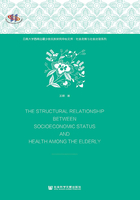
1.2.2 Proximal Factor: The Mechanism of SES-health by Healthy Lifestyle
Sufficient evidences have shown that health-related lifestyles could partly explain health differentials by SES. People with high SES are characterized by greater consumption of high-quality and low-fat diets.
People with high SES are characterized by greater consumption of high-quality and low-fat diets. In contrast, disadvantage groups tend to involve cigarette smoking and excessive alcohol consumption,
In contrast, disadvantage groups tend to involve cigarette smoking and excessive alcohol consumption, in order to cope with stress in their lives.
in order to cope with stress in their lives.
These associations also vary by age and gender. Øvrum, Gustavsen, and Rickertsen explored how the income and education gradients in physical activity, smoking, consumption of fruit and vegetables and self-rated health vary with age among Norwegians aged 25 to 79. The education gradient in smoking and in physical activity, as well as the income gradient in consumption of fruit and vegetables among elderly men, became smaller at older age; while only physical activity among elderly women grew stronger. Smith and Goldman showed reverse income gradients in obesity, smoking and drinking in Mexico, which was contrary to patterns in the industrialized world.
The education gradient in smoking and in physical activity, as well as the income gradient in consumption of fruit and vegetables among elderly men, became smaller at older age; while only physical activity among elderly women grew stronger. Smith and Goldman showed reverse income gradients in obesity, smoking and drinking in Mexico, which was contrary to patterns in the industrialized world. A Canadian survey, by Denton and Walters, claimed that smoking and alcohol consumption were more important determinants of health(subjective health and functional health status)for men than women aged 20 and above, while body weight and being physically inactive were more important determinants of health for women than men aged 20 and above.
A Canadian survey, by Denton and Walters, claimed that smoking and alcohol consumption were more important determinants of health(subjective health and functional health status)for men than women aged 20 and above, while body weight and being physically inactive were more important determinants of health for women than men aged 20 and above. Prus and Gee found having an acceptable body weight was positively linked to health for eld erly Canadian women.
Prus and Gee found having an acceptable body weight was positively linked to health for eld erly Canadian women. In China, adults aged 18 to 70 with a high SES were more likely to engage in a healthy lifestyle, being able to afford this, which in turn promoted their self-rated health.
In China, adults aged 18 to 70 with a high SES were more likely to engage in a healthy lifestyle, being able to afford this, which in turn promoted their self-rated health. Kim and his colleagues conducted a comparative study between China and the United States to understand health discrepancy issues cross-nationally.
Kim and his colleagues conducted a comparative study between China and the United States to understand health discrepancy issues cross-nationally. As SES(income and education)improved, lifestyle(diet, physical activity, smoking, and alcohol consumption)became less healthy in China.
As SES(income and education)improved, lifestyle(diet, physical activity, smoking, and alcohol consumption)became less healthy in China. Conversely in the United States, a higher SES was related to a healthier lifestyle. These findings are important in explaining corre-sponding age and gender patterns of inequality in health. However, a longitudinal study in America of 3617 non-institutionalized adults showed that cigarette smoking, alcohol consumption, physical activity, and Body Mass Index(BMI)explained only a modest portion of the socioeconomic differences in health.
Conversely in the United States, a higher SES was related to a healthier lifestyle. These findings are important in explaining corre-sponding age and gender patterns of inequality in health. However, a longitudinal study in America of 3617 non-institutionalized adults showed that cigarette smoking, alcohol consumption, physical activity, and Body Mass Index(BMI)explained only a modest portion of the socioeconomic differences in health. That is, the higher prevalence of these four health-risk behaviors among lower SES groups was not the dominant mediating mechanism which could contribute to health ine-qualities by SES.
That is, the higher prevalence of these four health-risk behaviors among lower SES groups was not the dominant mediating mechanism which could contribute to health ine-qualities by SES.
In fact, multiple liner regression analysis and logistic regression models, which are widely applied in prior studies, are not a good choice for mechanism studies, since these two kinds of analytical methods are not able to reflect indirect impacts, nor are they able to detect the covariation between independent variables and dependent variables, as well respective analyses would also yield inconsistent results. Most of the mechanism research on SES-health paid attention to the general population, with only a limited number of studies focused on elderly people. Whether healthy lifestyle could explain socioeconomic differences in health among elderly individuals is still unclear.